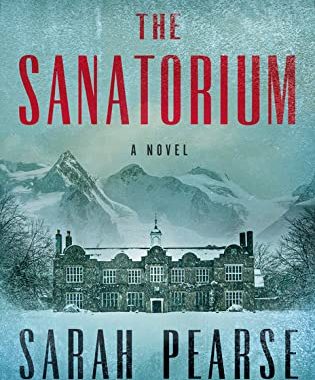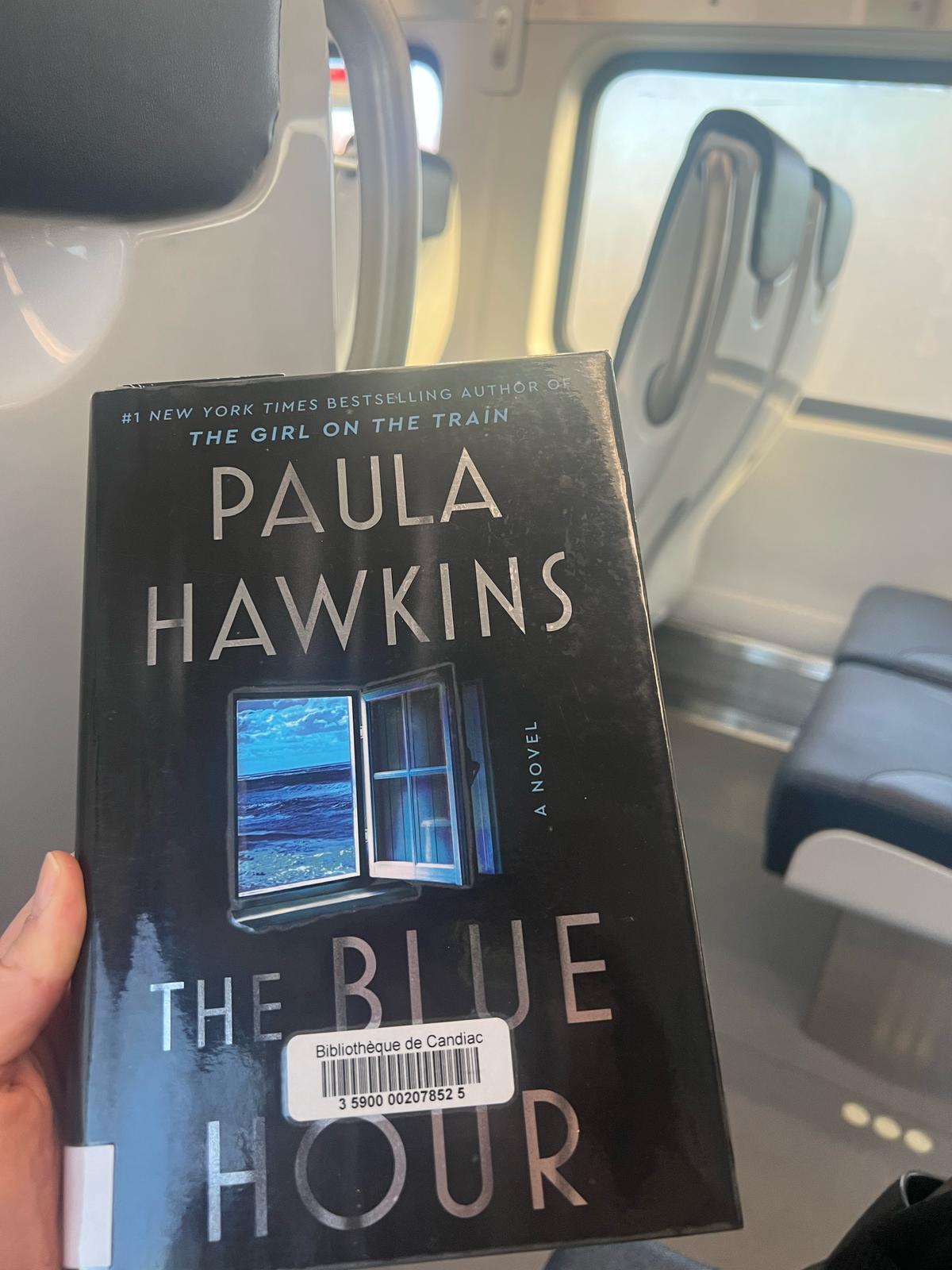
The Blue Hour – The worst story you’ll ever read
About the Book
On Eris, an island accessible from the Scottish mainland only twelve hours a day, resides Grace, a solitary figure content in her isolation. The island was once home to Vanessa Chapman, a renowned artist whose unfaithful husband vanished two decades ago. Following Vanessa’s death, a shocking discovery in one of her artworks—a human bone—sparks a series of revelations that intertwine the lives of Grace and those connected to Vanessa’s legacy.
Characters
Grace Haswell
A former doctor, Grace resides alone on Eris Island, having been the close companion and caretaker of the late artist Vanessa Chapman. Their relationship was intense and possibly codependent, with Grace displaying obsessive tendencies and a fierce protectiveness over Vanessa’s legacy. Her reluctance to part with Vanessa’s belongings and her evasiveness raise questions about her true motives.
Grace is the novel’s complex antagonist and second narrator. Physically, she is described as surprisingly “ugly,” a trait that helps conceal her dangerous inner nature. She is a loyal former physician and devoted caregiver to Vanessa, but she is also a serial killer responsible for the deaths of Nick Riley, Julian Chapman, and Vanessa.
Grace is a lonely, reclusive figure whose defining characteristic is an obsessive miscalculation of attachment. She commits violence when she feels her trust has been betrayed or when she is protecting someone she cares for. She engages in self-delusion, rationalizing her actions as justified or viewing her numerous murders and lies as balanced by the good she did as a doctor. She becomes more deeply entrenched in her destructive patterns, killing Becker because she perceives his final distancing as a personal rejection, ensuring she never faces accountability for her crimes.
Vanessa Chapman
A reclusive and renowned artist, Vanessa lived and worked on Eris Island until her death. Her art, often incorporating found objects, becomes the center of controversy when a human bone is discovered in one of her sculptures. Vanessa’s tumultuous marriage to Julian Chapman and her complex friendship with Grace are pivotal to the unfolding mystery. Vanessa is the deceased artist whose life and legacy drive the entire plot. She was beautiful, creatively flexible, and fiercely independent, valuing her artistic career and privacy above all else. Her sensitive appreciation for the harsh beauty of the isolated island, Eris, defined her work. She was an aloof and sometimes cruel friend to Grace, appreciating her devotion but sometimes treating her selfishly. Vanessa guarded her privacy fiercely, never revealing why she canceled her exhibition after her work was destroyed. Her letters reveal that before her death, she found peace in her unconventional life, proud that she did not live the life she was “expected to.”
James Becker
An art curator at the Fairburn Foundation, James is tasked with investigating the origins of the bone found in Vanessa’s sculpture. His journey to Eris Island brings him into contact with Grace, leading to a tense dynamic as he seeks the truth about Vanessa’s life and art. James’s personal connections and insecurities add depth to his character.
Becker is the novel’s protagonist and narrator, a well-educated curator whose life is defined by a deep passion for Vanessa Chapman’s art. Despite his apparent success, he is plagued by insecurity, constantly comparing his social status and lack of wealth to the Lennox family. He feels a profound sexual rivalry with Sebastian, his wife’s former fiancé.
Becker is a dynamic character whose confidence grows as he delves into Vanessa’s life with Grace Haswell. He gains a unique form of power, realizing with “glee” that he has the knowledge to “shape how the world sees Vanessa Chapman”. This intellectual curiosity and his desire to feel powerful and heroic by solving the mystery of the human bone prevent him from seeing the increasing danger posed by Grace. His pursuit of knowledge and ambition tragically leads to his downfall, and he presumably dies filled with regret for never meeting his unborn child, showcasing The Dangers of Ambition.
Helena Becker
James’s pregnant wife, as the plot unfolds, and Becker’s fears of her infidelity and the paternity of the child are never confirmed. Helena has a complicated history, having been previously engaged to Sebastian Lennox, the heir to the Fairburn Foundation. Her past and James’s insecurities about their relationship add another layer of tension to the story.
Their relationships, marked by obsession, secrecy, and the shadows of the past, drive the novel’s exploration of the human psyche and the complexities of art and legacy. Helena is Becker’s wife, characterized as beautiful, pleasure-loving, and pragmatic. She remains an enigmatic character because the reader only sees her through Becker’s lens of insecurity. She is psychologically astute and insightful, often pointing out the social pressures on women and the flaws in the Lennox family’s worldview.
Julian Chapman
Vanessa’s estranged husband, Julian disappeared under mysterious circumstances two decades prior. His absence looms over the narrative, with suspicions about his fate intertwined with the secrets held by Grace and the revelations in Vanessa’s art.
Emmeline Lennox
Emmeline is Sebastian’s mother and the elegant, aloof wife of the deceased Douglas Lennox. She places immense value on propriety and social appearances. She secretly murdered her husband and paid an employee to take the blame. She is cruel and vindictive toward Becker, whom she views as socially inferior, and taunts him with the possibility of Helena’s infidelity. Emmeline is one of the few characters who faces consequences for her actions: her anonymous tip-off to the police results in her suffering a heart attack, reflecting a form of punishment for her cruelty and systemic corruption.
Sebastian Lennox
Sebastian is a significant secondary character: handsome, charismatic, and privileged. He is the head of the Fairburn Foundation and Becker’s supposed best friend, despite having been engaged to Becker’s wife, Helena. Sebastian is a foil to Becker, representing everything Becker feels he lacks (wealth, confidence, social ease). The reader views him only through Becker’s envious and insecure perspective, making his true thoughts and motivations—especially regarding Helena—enigmatic.
Lady Emmeline Fairburn
Mother of Sebastian, Reserved, controlled, and observant. She speaks with deliberate precision and always seems to be three steps ahead in any social interaction. There’s a regal confidence to her, but also a subtle chill — as if she’s always withholding something.
Lady Emmeline Fairburn is a symbol of the old guard, representing a legacy of secrecy and preservation of reputation. She acts as a keeper of history on Eris Island and is intricately connected to the island’s past tragedies and betrayals. Her refined presence masks a sharper instinct to protect certain truths — even at the expense of justice.
She raises critical moral and thematic questions in the novel:
How much truth should be buried for the sake of legacy? And who gets to decide?
Artistic Inspiration: The novel intricately weaves art into its narrative, exploring how creativity can both reveal and conceal truths.
Isolated Setting: Eris Island’s unique geography—being cut off from the mainland for half the day—adds to the novel’s suspenseful atmosphere.
Narrative Style: The story unfolds through multiple perspectives and timelines, including Vanessa’s diary entries, providing a multifaceted view of events.
Vanessa Chapman: The Artist
Vanessa’s artwork is a reflection of her inner turmoil, longing for freedom, and deep connection to Eris Island. A trained and passionate artist, her works explore the fragility of self, the power of nature, and the cycles of isolation and revival. Her ceramic and painting series carry an emotional undercurrent—inviting the viewer into a deeply personal and layered psychological landscape.
29 Ceramics & 18 Paintings
Ceramics:
SEA Series 1–9
Glazed in oceanic blues and greens with texture reminiscent of waves or erosion.
Evokes movement, transformation, and the uncontrollable force of nature.
Suggests a desire for emotional cleansing or surrender.
Eris Series 1–12:
Inspired by Eris Island, where Vanessa lived. Likely uses natural materials (sand, ash, stone glaze).
Possibly asymmetrical or weathered in appearance—reflecting isolation, erosion, and endurance.
Symbolizes Vanessa’s conflict with the island—both refuge and prison.
Flourish 1–3
A rare note of hope. Possibly floral-inspired ceramics—delicate yet strong.
Representing moments of regrowth, healing, or clarity.
Breathe 4, 7, 8, 9, & 12
A recurring series. Likely simple forms—open bowls or minimalist vessels.
The title suggests calmness, resistance, and the necessity of space.
The use of air or breath implies a search for peace in suffocating circumstances.
Division / Division II
Likely stark, cracked, or intentionally split pieces.
Metaphor for personal fracture or the split between public and private identities.
Speaks to inner conflicts or emotional separation.
Flare-Lip Vases
Unconventional design. Possibly echoing emotion bursting outward, repressed feelings escaping.
Suggests a dramatic, passionate edge to her creative output—her emotions barely contained.
Paintings:
To Me She Is a Wolf
A striking title—suggesting female strength, wildness, and danger.
Likely features symbolic, possibly abstract representations of wolves.
A tribute to fierce independence or unspoken rage.

Darkness Causes / Us Not Discomfort
Possibly a diptych or conceptually linked pair.
Explores the duality of darkness—not as fear, but familiarity or truth.
Suggests Vanessa’s growing comfort with isolation and emotional shadow.

Follow Me
Intriguing, possibly disorienting. May include a path, stairway, or abstract movement.
Could reflect manipulation, desperation, or desire for connection.
Whispers of both a call and a trap.

Totem
Stacked or layered symbols. A portrait of personal identity or ancestral memory.
Suggests Vanessa’s attempt to find meaning in structure or spirituality.

North
Directional and metaphorical. Could be cold, stark, and barren.
Represents her longing for orientation or truth.
May indicate emotional “true north” or a destination of hope.

Hollow
A deep emotional work. Likely features empty space, soft contours, or negative space.
Represents loss, emotional exhaustion, or numbness.

Drink Pairings

Blue Lagoon Cocktail
A vibrant mix of vodka, blue curaçao, and lemonade, reflecting the novel's title and moody tones

Islay Scotch Whisky
A nod to the Scottish setting, offering smoky flavors that mirror the book's mysterious ambiance.

Chamomile Tea:
A calming herbal infusion to balance the novel's tension-filled narrative.
Plot Summary
The psychological thriller The Wilds centers on a contemporary investigation into the mysterious past of a deceased artist, Vanessa Chapman, whose legacy is controlled by the charitable Fairburn Foundation.
The Bequest, the Bone, and the Island
The plot begins in 2021 at the Fairburn Estate in Scotland, where James Becker, creative director and friend of the head of the foundation, Sebastian Lennox, is overseeing Vanessa Chapman’s artistic estate. Vanessa, who died of cancer in 2016, had surprisingly bequeathed her entire collection to the foundation, despite a history of enmity with Sebastian’s late father, Douglas Lennox.
The mystery deepens when a viewer claims that a bone in one of Vanessa’s sculptures, originally labeled as deer bone, is human. This immediately raises alarm, as Vanessa’s husband, Julian Chapman, vanished mysteriously in 2002 after visiting Vanessa on Eris, an isolated tidal island where she lived and worked.
Becker travels repeatedly to Eris to question Vanessa’s executor and close friend, Grace Haswell, who is initially secretive and holds back documents. Becker is fascinated by Vanessa’s work, and Grace slowly shares Vanessa’s papers, revealing her life’s history. However, Grace’s narrative is unreliable; she was obsessed with and deeply jealous of Vanessa.
Grace’s Dark Secrets
The novel gradually reveals Grace’s dark, murderous past:
1993: Grace killed a former friend, Nick Riley, on Eris in a fit of rage after he taunted her and buried his body in the woods. Years later, Vanessa unknowingly found one of his bones and used it in her sculpture, triggering the current investigation.
2002: Driven by jealousy, Grace killed Julian Chapman and hid his body in the septic tank under Vanessa’s cottage. She also destroyed many of Vanessa’s artworks, blaming Julian, which led to the cancellation of Vanessa’s major exhibition.
2016: Grace administered a fatal overdose of drugs to Vanessa when she was in the final stages of cancer, an act with ambiguous consent.
The conclusion finds Becker finally piecing together Grace’s crimes. Grace, realizing she’s been exposed, drugs Becker with morphine and traps him on Eris. The ending implies that Becker drowns, a victim of Grace’s obsession.
Book Club Outfit Inspiration
Embrace the novel’s themes with these outfit ideas:
Coastal Chic: Layered knits and earthy tones reflect the island’s rugged beauty.
Artistic Flair: Incorporate bold accessories or patterns as a tribute to Vanessa’s artistic legacy.
Mystery Mood: Dark hues and structured pieces echo the novel’s suspenseful elements.
Book Club Discussion Questions
How does the isolated setting of Eris Island influence the characters’ behaviors and decisions?
In what ways does art serve as both a revelation and a concealment of truth in the novel?
Discuss the dynamics between Grace and Vanessa. How do their pasts shape their relationship?
What role do Vanessa’s diary entries play in unfolding the narrative?
How does the novel explore the theme of isolation, both physical and emotional?
How does the remote setting of Eris Island function as a character in the story?
What atmosphere does it create, and how does it influence the characters’ behaviors?In what ways do the characters use art as a form of communication or concealment?
Do you think art in the story is more revealing or deceptive?Trust and perception play a big role in the novel — how do your perceptions of the characters shift throughout the story?
Did any character surprise you?How is isolation—both physical and emotional—depicted in the story?
How does it affect different characters in different ways?What role does legacy play in the novel?
How do characters manage the weight of the past, especially when it involves others’ secrets?How do you interpret Vanessa’s art—do you see it as confessional, cryptic, or something else entirely?
Do you think the author uses the past effectively as a narrative device?
How do the diary entries shape our understanding of the present?How does The Blue Hour compare to other psychological thrillers or Gothic mysteries you’ve read?
What emotions did the book stir in you—suspicion, empathy, unease?
Was there a specific moment that felt particularly intense?If this story were adapted into a movie or series, what kind of visual or cinematic style would best suit it?
Who would you cast as the main characters?
Games and Trivia
1. Character Match-Up: Create cards with character names and separate cards with their descriptions or roles. Players match them correctly.
2. Timeline Challenge: List events from the novel out of order. Participants rearrange them chronologically.
3. Art or Artifact?: Present images of various artworks and artifacts. Players guess whether each item is a real artwork or a fictional piece from the novel.
Symbols & Motifs
The Island (Eris) 🏝️
The fictional island of Eris is a significant setting that symbolizes isolation, liminality, and the difficulty of concealing the truth. As a tidal island, Eris is a liminal space, sometimes isolated and sometimes accessible, which reflects how individuals can try to hide aspects of their personalities and histories but rarely succeed completely. This impermanent access mirrors the
limited and fragmented access to the truth that Becker gains about past events, which contributes to The Subjective Nature of Truth and Memory. Limited access to the island is dangerous—one could drown at high tide—and similarly, Becker’s possession of only fragmented truths about Grace leads to a dangerous, fatal situation. The island’s remote nature emphasizes the profound loneliness and isolation felt by Grace, Vanessa, and Becker.
The Bone 🦴
A fragment of bone in Vanessa’s sculpture, Division II, creates the inciting action and symbolizes how the past never completely vanishes. The bone, which belonged to Nick Riley, highlights that while bodies decay, skeletons can linger for thousands of years. Grace’s act of hiding Nick Riley’s body failed because the bone resurfaced decades later, symbolizing how past crimes and traumas continue to pose a threat and can reappear unexpectedly. The lingering presence of the bone broadly represents how past traumas linger for the characters, such as Grace’s violent rages and Becker’s lingering insecurities over his class background, persisting like the skeletons of the dead.
Becker’s Vomit 🤮
Becker’s act of vomiting after learning the bone belongs to Nick Riley is a powerful symbol of the revelation of a repulsive truth and his immediate vulnerability. The vomit is caused by both shock and the morphine Grace secretly administered, confirming he is trapped on the island with a killer.
Expulsion of Truth: The vomiting symbolizes the truth being involuntarily expelled—something hidden inside Grace’s secret history becomes public and visible to Becker, despite her desire for it to remain concealed.
Repulsive Reality: Like vomit, the truth is repulsive.
Vulnerability: The vomiting signifies Becker’s vulnerability and realization that his fate is sealed, as the truth he knows is so dangerous that Grace cannot allow him to leave the island.

The Housemaid
You May Also Like

Our Story
May 11, 2023
The Sanatorium by Sarah Pearse
August 31, 2025




























